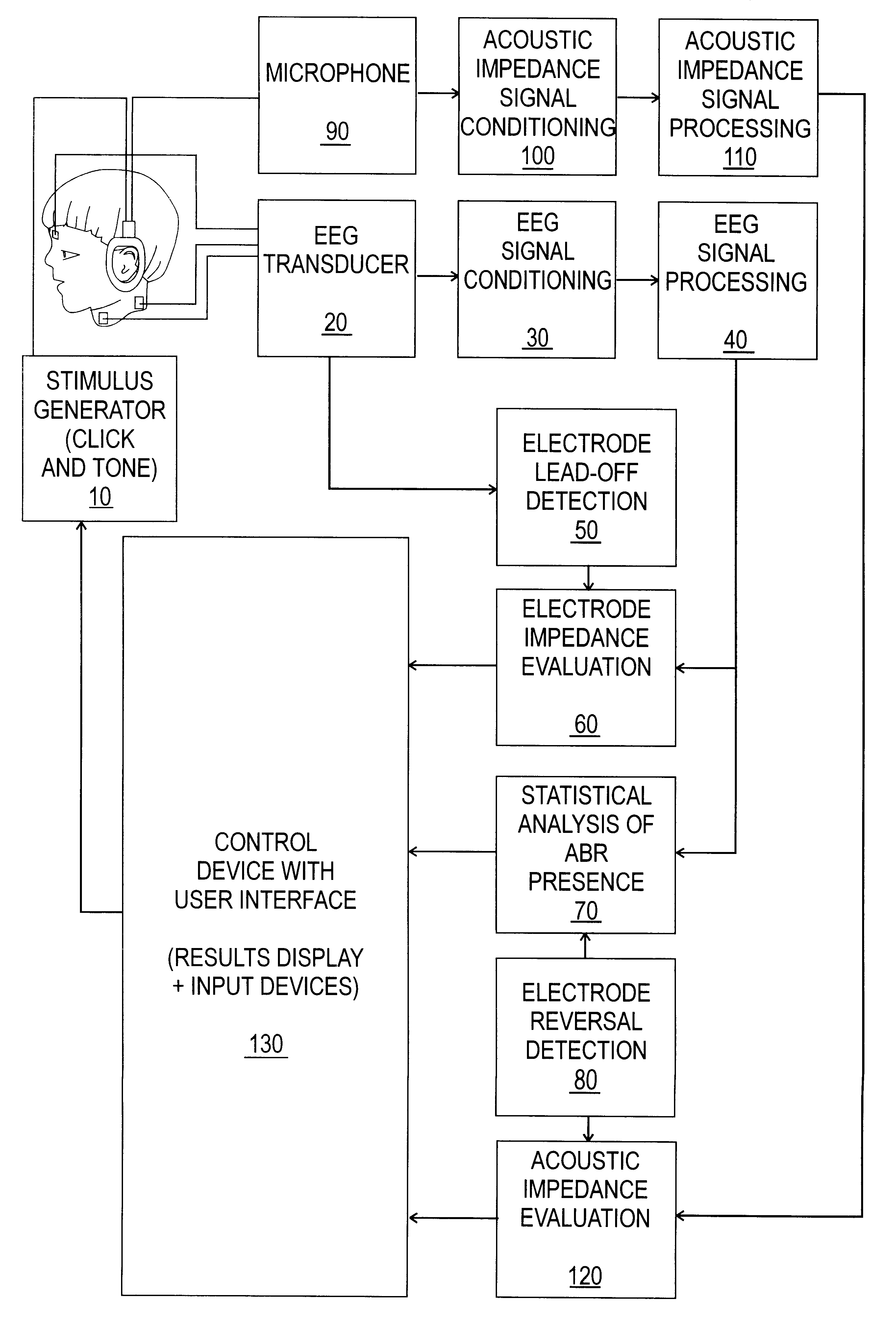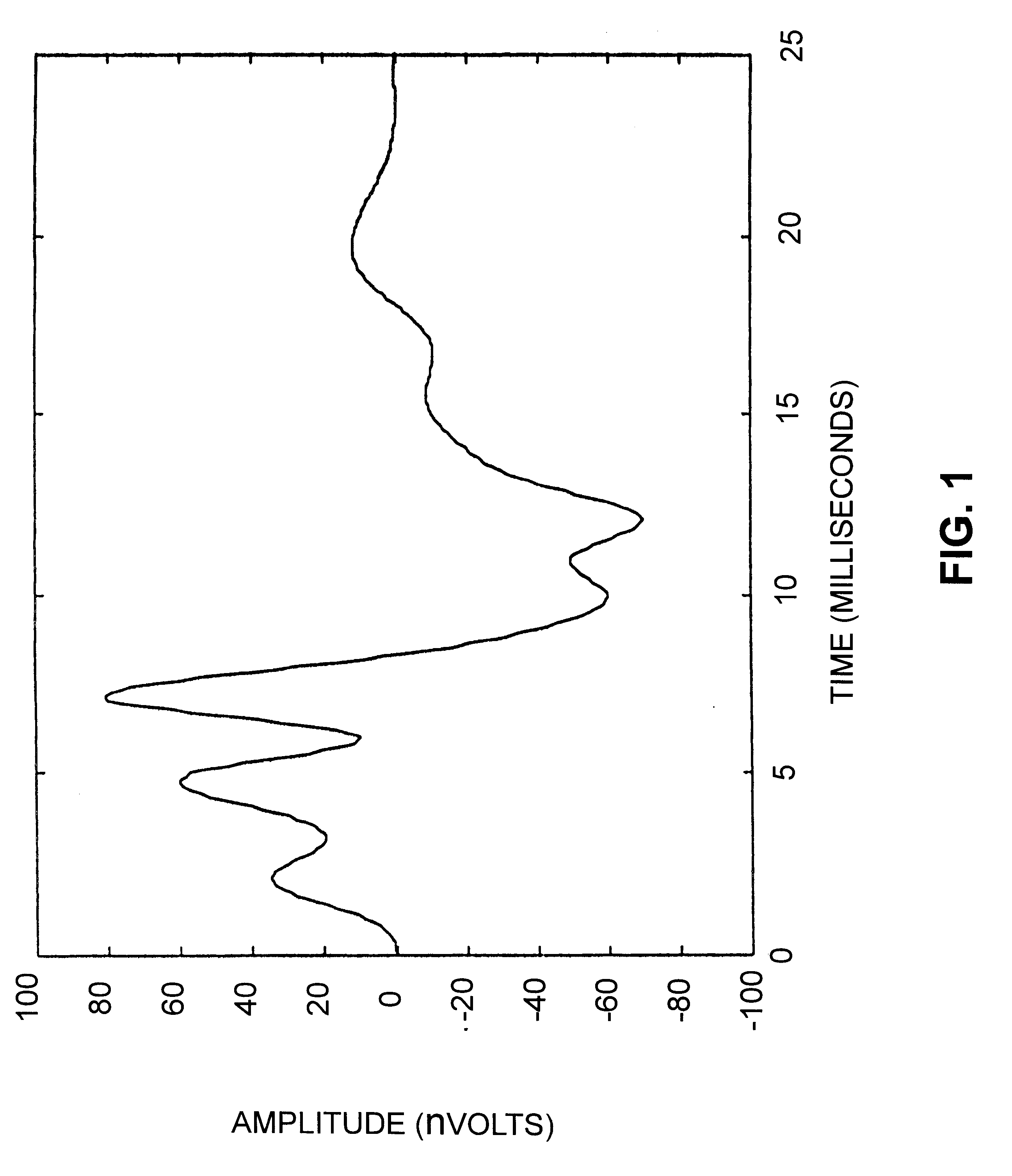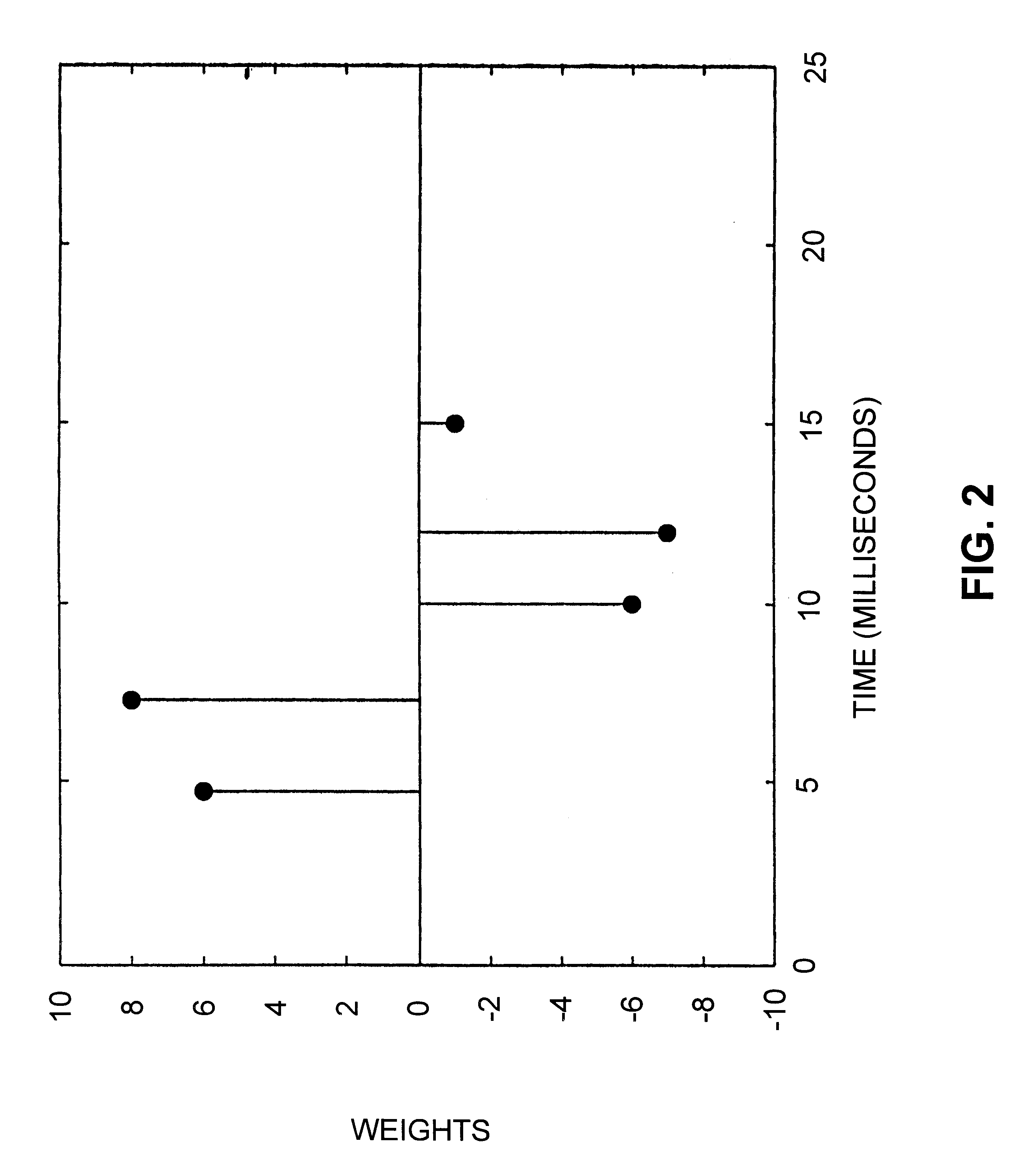Hearing evaluation device with patient connection evaluation capabilities
a technology of evaluation capability and hearing evaluation device, which is applied in the direction of bioelectric signal measurement, medical science, diagnostics, etc., can solve the problems of affecting the validity of the test. , to achieve the effect of compromising the test data
- Summary
- Abstract
- Description
- Claims
- Application Information
AI Technical Summary
Benefits of technology
Problems solved by technology
Method used
Image
Examples
Embodiment Construction
a. Overview
The invention disclosed herein detects, processes and analyzes the EEG response of a subject to certain sound stimuli. A click sound stimulus is repetitively applied to the subject's ear through a transducer. The click stimuli may be applied to one ear at a time (monoaurally), or to both ears simultaneously (binaurally). In the past, when binaural click stimuli have been applied, they have been applied at different frequencies. In a preferred embodiment, monoaural stimuli are applied at 37 Hz.
The click stimuli are applied to the subject through a sound transducer. The transducer is connected to the subject through an earphone. Although many different types of earphones could be used, a preferred embodiment of the present invention uses the earphones of U.S. patent application Ser. No. 09 / 395,799, filed by Sheehan et al The earphones described in U.S. Pat. Nos. 5,826,582 (Sheehan et al.), 5,913,309 (Sheenan et al.) and 4,930,250 (Liverani), are also suitable for use with t...
PUM
 Login to View More
Login to View More Abstract
Description
Claims
Application Information
 Login to View More
Login to View More - R&D
- Intellectual Property
- Life Sciences
- Materials
- Tech Scout
- Unparalleled Data Quality
- Higher Quality Content
- 60% Fewer Hallucinations
Browse by: Latest US Patents, China's latest patents, Technical Efficacy Thesaurus, Application Domain, Technology Topic, Popular Technical Reports.
© 2025 PatSnap. All rights reserved.Legal|Privacy policy|Modern Slavery Act Transparency Statement|Sitemap|About US| Contact US: help@patsnap.com



